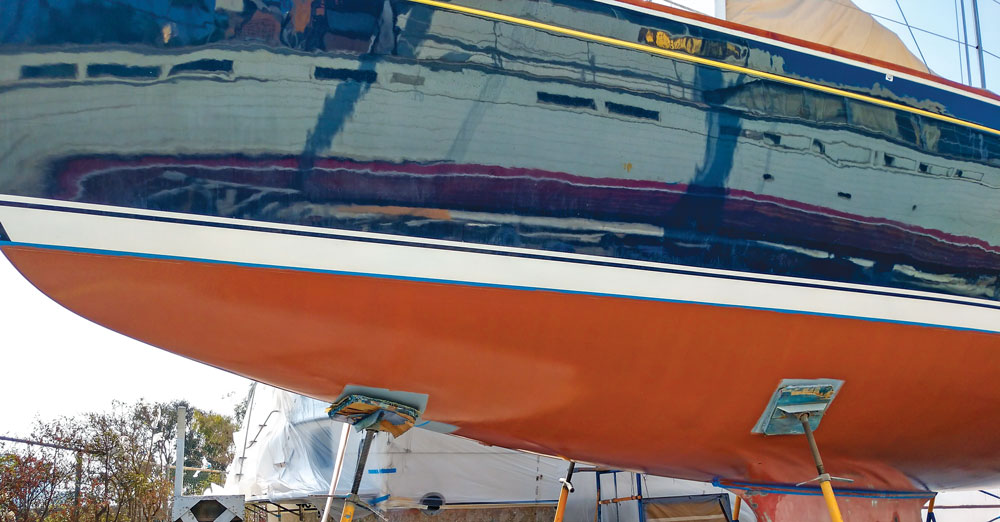New season, new paint
A fresh bottom paint job and a topside touchup will have your boat looking and sailing great
Using a small foam roller and working in small, manageable lengths, roll on the paint, then go back and, using a vertical motion, lightly tip the paint with a badger hair brush to flow it out for a smooth finish before continuing to the next section. Rolling and tipping may not be the perfect finish that you might find with a sprayed paint, but from 6 feet away it will look just as good.
If a new boot stripe suddenly makes the cove stripe look a little dingy, the cove stripe can be repainted using the same method.
With a fresh bottom and a few topside touchups, your boat can be looking sharp and sailing smoothly in the upcoming season.
Choosing paint

Choosing a bottom paint for a boat depends on many factors including where the boat sails—some copper biocides are outlawed for use in certain locations—the kind of sailing the boat does, the boat’s construction, the amount of maintenance an owner is comfortable with and ease of application.
Ablative paints, such as VC17m and Interlux Micron Extra, are relatively soft paints that include a biocide to retard organic growth and are the most commonly used type of paint. The ablative property of the paint means that it wears away as water flows over it. This wear prevents excessive paint build-up and, more importantly, continually exposes fresh biocide to prevent future growth.
Other bottom coatings incorporate different technologies. Coppercoat, for example, is a layer of epoxy with pure copper powder suspended within it. Once immersed, seawater begins to corrode the copper particles, resulting in the formation of cuprous oxide, a highly effective biocide. In time, the cuprous oxide converts to cupric hydrochloride and sloughs off in the water. The sloughing exposes fresh copper, and the process repeats. Coppercoat is burnished to a hard, smooth finish after application, and the smooth surface combined with the biocide action makes for an effective antifouling surface. --B.P.

Comments